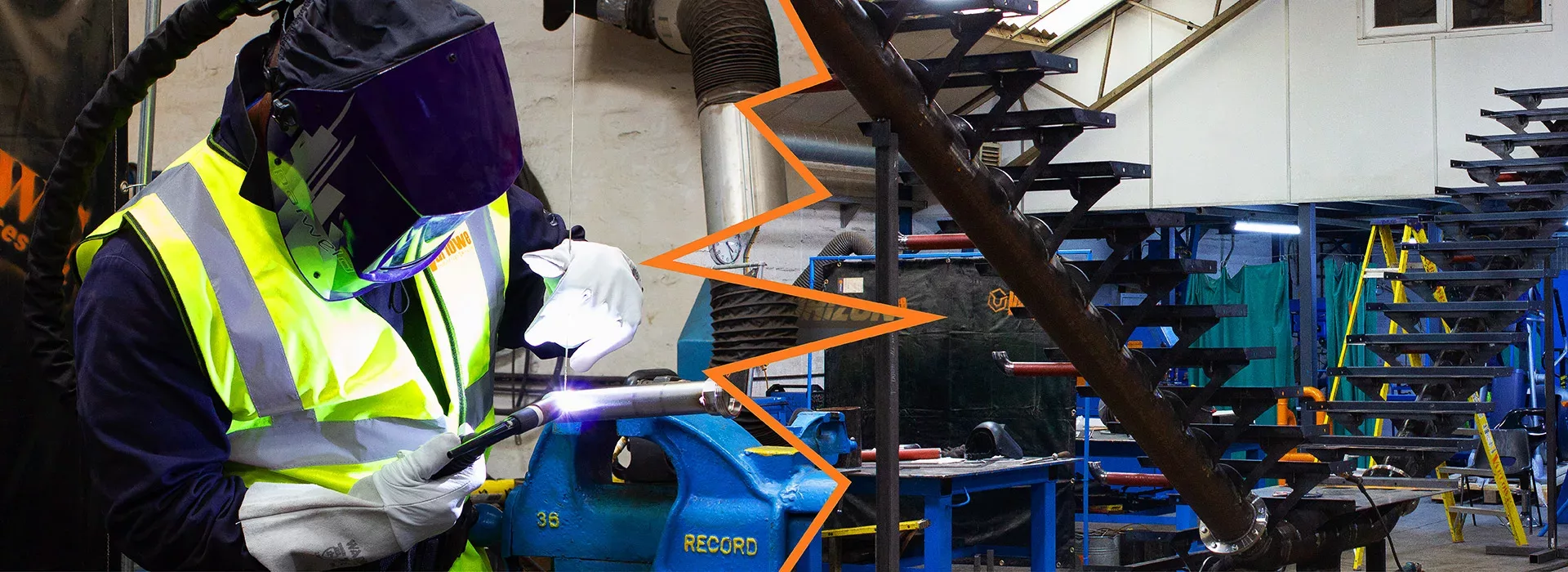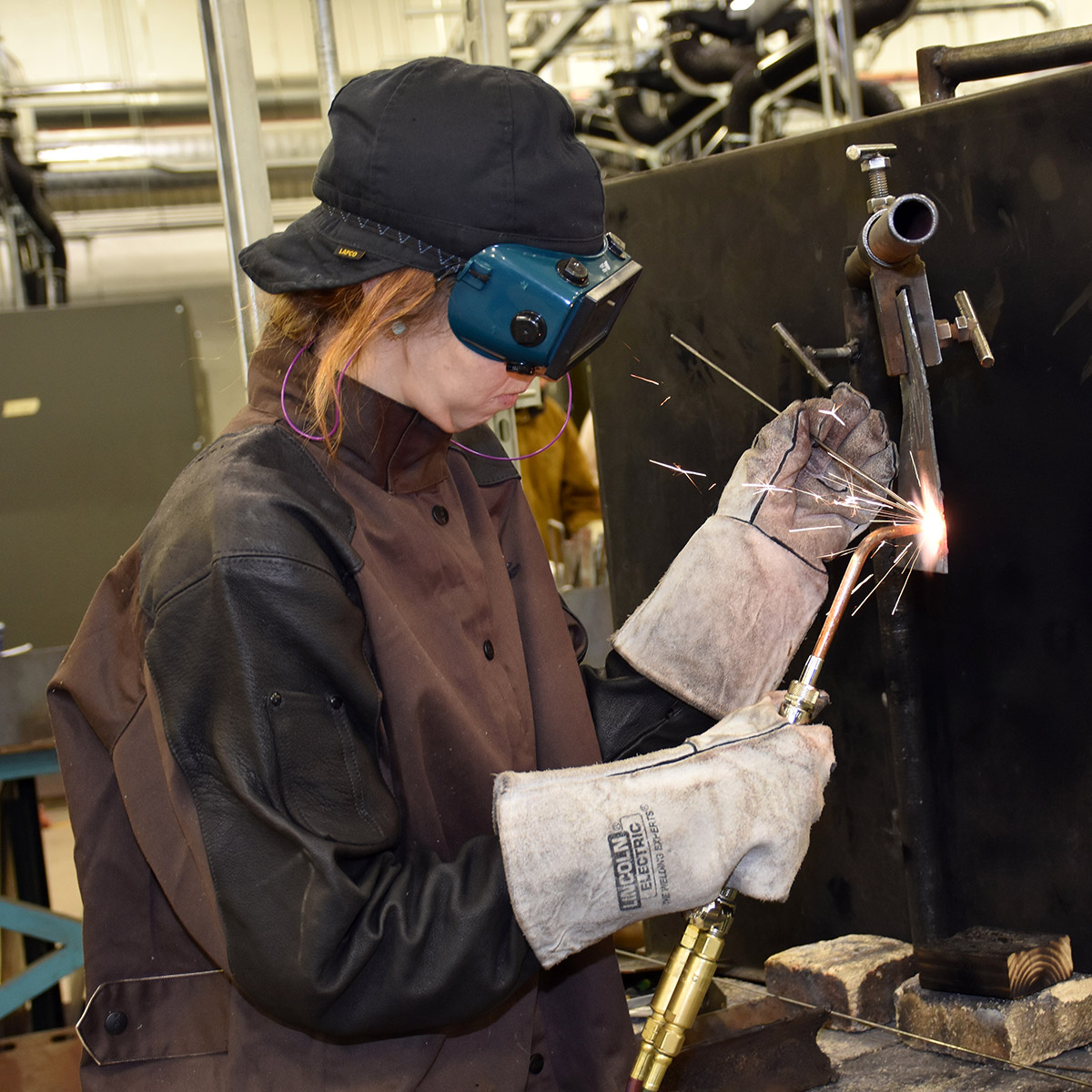Everything about Welding: Secret Insights Into Techniques and Finest Practices for Success
Welding incorporates a range of techniques, each fit for details products and applications. Understanding these approaches, such as GMAW, SMAW, and TIG, is vital for attaining excellent results. Furthermore, the ideal equipment and safety and security practices can not be ignored. As preparation and repairing play critical functions in the welding procedure, mastering these elements can significantly enhance the high quality of the last product. What are the crucial elements that ensure an effective weld?
Comprehending Various Welding Methods
Welding strategies encompass a selection of methods, each suited to details applications and products. Amongst the most typical techniques are Gas Steel Arc Welding (GMAW), Secured Metal Arc Welding (SMAW), and Tungsten Inert Gas Welding (TIG) GMAW, also referred to as MIG welding, is popular for its speed and convenience, making it optimal for thin products. SMAW, or stick welding, is preferred for its simpleness and efficiency in outdoor environments, particularly with thicker metals. TIG welding provides precision and control, making it appropriate for detailed job and non-ferrous steels (Montana Mobile Welding and Repair Welding). Each method has its unique benefits and considerations, enabling welders to choose the most effective approach based on the project's demands, product kind, and wanted outcomes. Recognizing these strategies is crucial for successful welding
Essential Welding Equipment and Tools
While different welding techniques call for certain skills, the best equipment and devices are equally essential for accomplishing high quality outcomes. Crucial welding equipment consists of welding equipments, which vary depending upon the technique-- such as MIG, TIG, or stick welding. Protective gear, consisting of aprons, helmets, and handwear covers, warranties security and convenience throughout the procedure. On top of that, fixtures and clamps help safeguard products in position, making sure accuracy in welds. Consumables like welding rods, cable, and protecting gas are also important components that affect the top quality of the weld. Tools such as cutters and mills facilitate surface prep work and post-weld completing, adding to a professional end result. Buying high-grade tools inevitably improves the performance and efficiency of welding projects.
Safety And Security Practices in Welding
Correct safety and security techniques are necessary in the welding sector to protect employees from prospective threats. Welders should use suitable individual protective tools (PPE), consisting of headgears with appropriate shading, gloves, and flame-resistant apparel. Ample ventilation is important to lower direct exposure to damaging fumes and gases produced throughout the welding process. In addition, employees ought to be trained in the correct handling of welding tools to avoid accidents. Fire safety and security actions, such as keeping flammable products far from the welding area and having fire extinguishers conveniently offered, are needed. Routine assessments of equipment and work spaces can aid determine potential threats before they bring about crashes. By adhering to these safety methods, welders can develop a more secure working atmosphere and reduce dangers associated with their trade.
Readying Products for Welding
Preparing products for welding is a vital action that considerably influences the high quality and integrity of the final product (Montana Mobile Welding and Repair Welding). Appropriate preparation involves cleaning up the surface areas to get rid of contaminants such as dirt, rust, and oil, which can compromise the weld. Strategies such as grinding, sanding, or using solvents are generally employed to accomplish a clean surface area. Furthermore, guaranteeing that the materials fit with each other snugly is necessary; gaps can lead to weak welds. It's additionally important to think about the positioning and positioning of the components, as this will impact the simplicity of welding and the last result. Ultimately, picking the appropriate filler material and making sure compatibility with the base steels is important for attaining strong, resilient welds
Tips for Getting High-Quality Welds
Achieving high-quality welds requires interest to detail and adherence to finest methods throughout the welding procedure. Proper joint preparation is necessary, making sure surface areas are complimentary and tidy from pollutants. Choosing the ideal filler material and welding strategy based on the base steels is crucial for ideal bonding. Maintaining regular traveling rate and angle while welding can advertise and protect against defects harmony. In addition, controlling warmth input is important; excessive warmth can cause bending and compromised joints. If needed, on a regular basis evaluating the welds throughout the process enables for prompt changes. Employing proper post-weld therapies, such as cleaning and stress alleviation, can enhance the sturdiness and stability of the weld, inevitably making sure an effective outcome.
Repairing Usual Welding Issues
Welding often presents challenges that can affect the quality and stability of the final item. Usual issues such as porosity, irregular weld grains, and overheating can occur, each calling for certain troubleshooting methods. Recognizing these problems is important for welders to enhance their skills and attain excellent outcomes.
Porosity Troubles Described
Porosity can commonly be forgotten, it stays a vital issue in welding that can jeopardize the integrity of a finished product. Porosity describes the existence of little gas pockets within the weld bead, which can lead and compromise the joint to premature failure. This issue commonly develops our website from pollutants, wetness, or inappropriate protecting gas protection throughout the welding process. To mitigate porosity, welders need to verify that the base materials are tidy and dry, make use of proper securing gases, and keep consistent welding criteria. On a regular basis checking the devices and atmosphere can also aid recognize prospective concerns before they manifest in the weld. Resolving porosity effectively is essential for achieving solid, long lasting welds that satisfy top quality requirements.

Irregular Weld Beans
Inconsistent weld beads can greatly affect the top quality and stamina of a finished product. Different aspects add to this problem, including incorrect traveling speed, incorrect amperage settings, and inconsistent electrode angles. When the welder relocates also rapidly, a grain may appear narrow and do not have penetration, while moving also slowly can cause extreme buildup. In addition, making use of the wrong amperage can cause either damaging or excessive spatter, both of which concession weld honesty. The welder's method, such as irregular lantern movement, can likewise result in uneven grain look. To reduce these troubles, welders must concentrate on preserving constant, regulated motions and guaranteeing proper devices settings to attain uniformity in their welds. Consistency is vital to achieving strong and reputable welds.
Getting Too Hot and Bending Issues
Too much warmth during the welding process can result in significant getting too hot and warping problems, influencing the architectural integrity of the work surface. These issues frequently manifest as distortion, which can compromise placement and fit-up, making more setting up testing. Factors adding to overheating consist of the choice of welding parameters, such as voltage and take a trip speed, as well as the sort of product being bonded. To reduce these issues, welders need to preserve consistent traveling speed and appropriate warm input while monitoring the workpiece temperature level. Furthermore, pre-heating or post-weld heat therapy can aid alleviate anxieties triggered by fast cooling - Montana Mobile Welding and Repair. Regular evaluation and adherence to finest techniques are find here vital in preventing overheating and guaranteeing the longevity and dependability of bonded structures
Frequently Asked Inquiries
What Are the Occupation Opportunities in the Welding Sector?
The welding market provides varied profession opportunities, consisting of placements as welders, educators, inspectors, and engineers. Experts can operate in production, construction, aerospace, and auto industries, profiting from strong need and affordable incomes in different roles.
Just How Can I Improve My Welding Speed Without Giving Up Top Quality?
To boost welding rate without compromising high quality, one should practice efficient methods, keep devices, enhance setups, and improve hand-eye control. Routine training and seeking comments can also substantially add to achieving faster, premium welds.
What Accreditations Are Available for Welders?
Numerous accreditations exist for welders, consisting of those from the American Welding Society (AWS), the National Facility for Construction Education And Learning and Research (NCCER), and various industry-specific companies. These credentials improve employability and show skill proficiency.
Exactly How Does Welding Affect the Residences of Metals?
Welding influences the residential or commercial properties of metals by modifying their microstructure, which can lead to changes in solidity, ductility, and stamina. Warm input and cooling prices throughout the procedure significantly impact these product features.
Can I Bonded Dissimilar Metals Together?

Comments on “How overheating compromises welds and Montana Mobile Welding and Repair Welding’s approach to fix it”